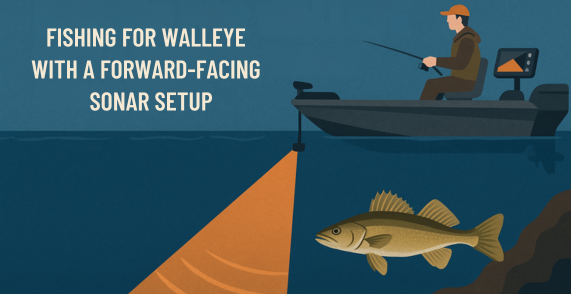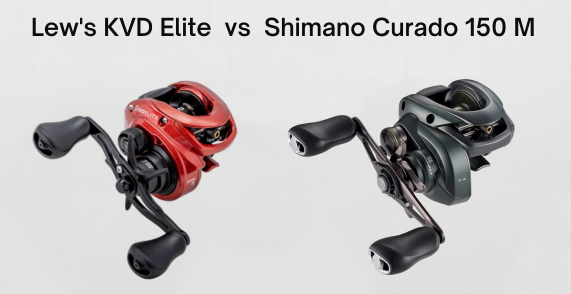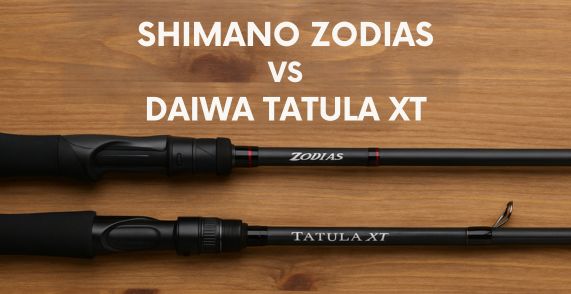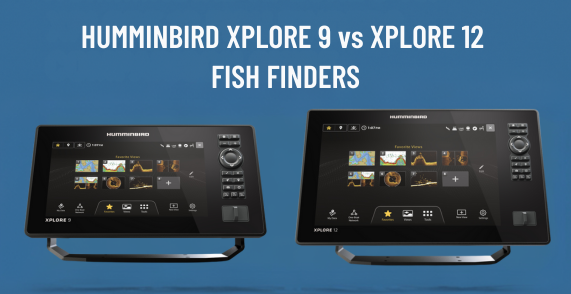In This Post
- 1 Key Takeaways
- 2 Real-Time Underwater Vision Can Significantly Improve Walleye Success Rates
- 3 Essential FFS Equipment for Walleye Hunting
- 4 Reading Walleye Behavior Through Your Screen
- 5 Proven FFS Tactics for Different Walleye Scenarios
- 6 Lures and Rigs That Maximize FFS Effectiveness
- 7 When to Power Down Your FFS for Better Results
- 8 FFS Gives Walleye Anglers an Unfair Advantage Worth Mastering
Key Takeaways
- Forward-facing sonar (FFS) transforms walleye fishing from guesswork into precision hunting by providing real-time underwater vision
- Proper transducer placement, power management, and calibration settings are critical for maximizing FFS effectiveness
- Reading fish behavior on screen and adapting lure presentation in real-time dramatically increases catch rates
- Strategic use of FFS-optimized lures and knowing when to power down the unit separates novice from expert anglers
- Modern walleye fishing success requires blending advanced sonar technology with traditional angling knowledge
Real-Time Underwater Vision Can Significantly Improve Walleye Success Rates
Forward-facing sonar has revolutionized walleye fishing by eliminating the guesswork that has plagued anglers for generations.
While traditional sonar provides valuable mapping and historical data, FFS offers a real-time view of what’s happening right now in front of the boat. This technology allows anglers to cast directly at visible fish rather than blindly trolling over structures hoping walleye are nearby.
The confidence boost alone changes everything about how walleye fishing works. Instead of spending hours wondering if fish are present, anglers can quickly scan an area and move on if it’s empty.
This real-time feedback creates an immediate learning loop that accelerates skill development.
Some guides report dramatic improvements in client success rates when using FFS.
The technology helps pinpoint key spots among boulder piles and reveals how walleye travel through different areas, allowing anglers to understand and intercept fish patterns more effectively than ever before.
Essential FFS Equipment for Walleye Hunting
1. Transducer Placement and Power Requirements
Proper transducer installation makes the difference between crystal-clear images and frustrating screen clutter. The transducer can be mounted on a bow-mount trolling motor for dynamic scanning, on the trolling motor lower unit, or on a dedicated pole mount for manual control.
Regardless of mounting choice, precise leveling is non-negotiable – even a few degrees of tilt dramatically impacts image clarity and distorts sonar returns.
Power management often gets overlooked, but it’s absolutely critical for optimal performance. FFS systems draw significant power, and a weak or shared battery can lead to performance issues.
A dedicated marine battery eliminates electrical interference that clutters the screen and ensures consistent, high-quality sonar performance throughout long fishing sessions.
2. Display Setup for Maximum Clarity
Screen size and positioning directly impact fishing success. Larger displays (10-inch or greater) can improve visibility, especially in challenging conditions like bright sunlight or rough water.
The larger screen real estate allows anglers to distinguish between different fish species and track lure movements more accurately.
Proper screen positioning reduces neck strain during extended use and ensures quick glances don’t take attention away from boat control.
Many successful FFS anglers mount their displays at eye level with minimal head movement required, creating an efficient scanning workflow that maintains situational awareness.
3. Calibration Settings That Matter
Factory default settings are just the starting point for serious walleye hunters. Gain control determines how much sonar signal appears on screen – too high creates clutter, too low misses subtle returns.
Range settings should match fishing conditions: 60-100 feet for deep water scanning, under 50 feet for shallow water target separation, though these ranges may vary based on water clarity and personal preference.
Color palette selection depends on environmental conditions and personal preference. Brighter palettes work better in direct sunlight, while high-contrast dark options excel in low-light conditions.
Expert FFS users constantly adjust these settings throughout the day as conditions change, treating the unit as an active tool rather than a passive display.
Reading Walleye Behavior Through Your Screen
Identifying Walleye vs Other Fish Species Requires Experience
Experienced anglers can learn to recognize walleye on sonar. They often appear as arches or streaks, and their movement patterns can provide clues – slow, deliberate positioning followed by sudden, powerful strikes.
Size, brightness, and behavior on screen help distinguish walleye from commonly misidentified species like sheepshead.
Learning these visual cues takes time and focused observation. Professional walleye guides emphasize watching fish reactions before making casts.
A large walleye often tilts up to examine a lure, then moves away slowly if uninterested, or follows aggressively when triggered. These behavioral patterns become the foundation for strategic lure presentation.
Spotting Active vs Inactive Fish Movement Patterns
Fish activity levels are clearly visible through FFS, allowing anglers to prioritize high-percentage targets. Active walleye move with purpose, often chasing baitfish or positioning near current breaks.
They respond quickly to lures and show aggressive following behavior on screen.
Inactive fish hover tight to structure with minimal movement, requiring different presentation strategies. These fish might need slower, more subtle approaches or complete lure changes to trigger strikes.
Understanding these behavioral cues helps anglers avoid wasting time on unresponsive fish while focusing efforts on actively feeding walleye.
Proven FFS Tactics for Different Walleye Scenarios
1. Targeting Suspended Open-Water Walleye
FFS has transformed open-water walleye fishing from passive trolling to active hunting. Suspended fish that were previously uncatchable through traditional methods become prime targets for precision casting.
Various lures can be effective for this technique, including large paddle-tail swimbaits, which provide strong sonar returns.
The key is locating individual fish or small pods, then making precise casts directly to visible targets.
This “sharp-shooting” approach turns open-water fishing into a series of high-probability pitches rather than covering vast areas hoping to intercept fish randomly.
2. Precision Vertical Jigging with Live View
Vertical jigging becomes incredibly precise with FFS down-perspective views. Anglers can drop jigs to exact depths where fish are marked and watch the entire interaction unfold on screen.
This eliminates guesswork about lure position and allows complete focus on presentation technique.
Different jigging cadences can be tested in real-time with immediate visual feedback. Whether fish prefer slow lift-and-drop presentations or aggressive bottom crashes becomes obvious when watching their reactions on screen.
Jigging Raps and other similar jigs can excel in these applications, particularly when fish are schooled in concentrated areas.
3. Structure Fishing with Real-Time Feedback
FFS revolutionizes structure fishing by showing exactly where fish position relative to cover.
Instead of casting blindly at likely spots, anglers can scan boulder piles, weed edges, and drop-offs to confirm fish presence before making presentations. This dramatically improves fishing efficiency by eliminating unproductive water.
The technology reveals how walleye use structure throughout different times and conditions. Fish might relate to the deep side during bright conditions or move shallow during low-light periods.
Real-time observation of these patterns helps anglers stay with active fish as they move.
4. Fine-Tuning Lure Presentation Based on Real-Time Fish Reactions
The ultimate FFS advantage comes from watching fish react to lures in real-time. If a walleye follows but doesn’t strike, anglers can instantly adjust retrieve speed, add rod tip twitches, or change directions to trigger reaction bites.
This immediate feedback loop accelerates learning and refines presentation techniques.
Fish mood becomes apparent within minutes through their screen reactions. Hesitant followers might need slower presentations or lure changes, while aggressive fish respond to faster retrieves.
This real-time adaptation eliminates the trial-and-error guesswork that traditionally required hours to figure out.
Lures and Rigs That Maximize FFS Effectiveness
Lures Designed for Clear Sonar Returns
Modern lure effectiveness includes a new factor: sonar visibility. Lures designed for optimal sonar visibility are created to provide strong, clear returns that allow precise tracking and fish interaction observation.
Hardbaits like jerkbaits and crankbaits can generate strong sonar returns due to their density and profiles.
Specific lures excel in different FFS applications. Shadow Rap jerkbaits work perfectly for suspended fish targeting, while Jigging Raps provide excellent visibility during vertical presentations.
Soft plastic swimbaits with broad-sided profiles also show up well on screen while offering versatile presentation options for various depths and conditions.
Lure selection now requires considering both fish attraction and sonar performance. The ideal FFS lure triggers strikes while maintaining clear screen visibility throughout the retrieve, allowing anglers to track every moment of the fish-lure interaction.
Lighter Rod Actions and Braid-to-Fluorocarbon Setups
FFS fishing demands specialized rod and line combinations optimized for precision and sensitivity.
Lighter, more responsive rod actions allow pin-point casting accuracy while providing the sensitivity needed to feel subtle bites during screen-watching sessions.
Line choice significantly impacts FFS success. Braided mainline with fluorocarbon leaders provides direct lure control and low visibility underwater. When using braid, careful drag settings are important to prevent pulling hooks from walleye’s delicate mouths during fights.
The rod-reel-line system serves as the critical interface between visual screen information and physical hooksets. Proper gear selection facilitates the seamless transition from observing fish reactions to successfully landing walleye.
When to Power Down Your FFS for Better Results
Despite its advantages, FFS isn’t always the best tool for every situation. The transducer’s “ping” can spook fish, especially in shallow water or heavily pressured areas.
Educated fish in popular fishing spots may have learned to associate the sonar sound with danger, making them increasingly wary of lures.
Smart FFS anglers understand when stealth trumps technology. In very shallow water, heavy current, or extremely clear water, it may be better to turn off the unit and rely on traditional casting to visible structure.
Strong currents also distort FFS images, making fish location and identification difficult.
Screen dependency can create tunnel vision, causing anglers to miss important environmental cues like bird activity, surface disturbances, or subtle structural changes.
The most successful FFS users maintain traditional fishing instincts while using technology as an enhancement tool rather than a replacement for fundamental angling skills.
FFS Gives Walleye Anglers an Unfair Advantage Worth Mastering
Forward-facing sonar represents the most significant advancement in freshwater angling technology, fundamentally changing how successful walleye fishing happens.
The ability to see fish reactions in real-time, adjust presentations instantly, and eliminate unproductive water creates efficiency levels previously impossible to achieve.
However, mastery requires more than just purchasing equipment. Understanding sonar signatures, interpreting fish behavior, maintaining proper settings, and knowing when traditional methods work better all contribute to FFS success.
The technology amplifies existing skills while demanding new competencies that separate casual users from expert practitioners.
The future belongs to anglers who seamlessly blend real-time sonar intelligence with deep walleye knowledge and traditional fishing instincts.
This combination creates an almost unfair advantage that transforms weekend warriors into consistently successful walleye hunters.







